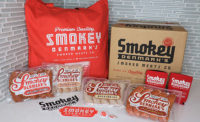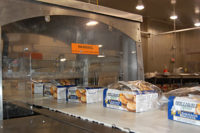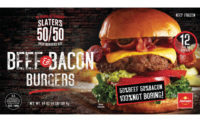Mulay's Sausage: Making Mama Mulay proud
Mulay's Sausage started with an old family recipe and has grown to a leading all-natural sausage brand.










As consumers turn more and more often to grocery stores for their fully cooked meals, they think back to the homemade meals of their youth. They long for meals the way their parents or grandparents made them. In the case of Mulay’s Sausage, the founders went as far as to re-create an old family recipe and turn it into a popular brand that is through throughout the country.
The idea to enter the meat business started with a couple of self-described ski bums found themselves at a New York City street festival. After trying one of the sausages and finding it pretty poor quality, Lorree Weisman and her husband Ward decided on the way back to Crested Butte, Colo. to make a batch of her grandmother’s sausage for a Fourth of July festival.
“We borrowed a KitchenAid and ordered 100 pounds of pork and spices, and we linked up 400 sausages with the KitchenAid. It took us all day and a couple six-packs of beer,” she says, laughing. “The next day we took them to the fair and sold out within four hours.”
The Weismans were involved in sausage making for several years along with other enterprises before making Mulay’s Sausage their full-time career in 2013. They and the company are now headquartered in Longmont, Colo. The company offers a line of popular fresh varieties, from a Hot, Mild and Killer Hot Italian (all derived from Nana’s original recipe), German bratwurst and a chorizo. Product evolution occurred very organically. Mulay’s introduced breakfast for the Weisman’s daughter, who loved to eat them. The bratwurst was developed as a tribute to Weisman’s German heritage.
“My mother is German, and we always tip out hat to the Italians, so I thought we should help her out a little bit,” she remarks.
Distribution now extends to 40 states from the West Coast and expanding eastward, and Mulay’s recently introduced a line of pre-cooked sausages. Demand has, to say the least, far outstripped what a KitchenAid mixer can produce.
Early on, Weisman worked with a grocer to make the company’s sausages. That relationship lasted for a couple of years, and then the grocer said he wanted to carry the products instead of making it. He passed on the name of a co-packer who agreed to produce the sausages instead.
“In the summer, we could drive over the hill on a dirt road, and he would drive an hour, and we would meet at the bottom of a pass and exchange money for sausage, and drive back with our sausage to sell at stores and restaurants,” Weisman recalls. “Those were probably our biggest customers at the time. Everybody carried, and still does, Mulay’s Sausage in Crested Butte.”
Mulay’s Sausage works with two co-packers now. Weisman says that one of the keys to a successful relationship is for the manufacturer to be willing to work with the brand’s specifications. Mulay’s sausages, for example, are made from antibiotic-free, humanely raised pork and are gluten-free as well. The company specifies all of its own pork suppliers, and the co-packers must be willing to work with them.
“One of our manufacturers did not do anything ABF prior to our arrival; now I think they do a lot more. The other one did a lot of ABF but didn’t work with our supplier. They have to be flexible enough,” Weisman says.
Trust is one of the most important parts of a co-packer relationship. The processor is entrusted with carrying out the recipe exactly as directed and being honest with costing. That trust must remain even if the working relationship may end.
“Everybody signs confidentiality agreements, but when you leave a processor for one reason or another – there are different reasons – you can trust that they don’t come out with a line of products just like yours,” Weisman says. “It’s something that we deal with.”
The new line of cooked sausages took some work, as they had to meet Weisman’s standards.
“The difference, I think, in our new cooked line as opposed to most of the other cooked sausages on the market is the fact that they eat like a fresh sausage, even though they’re pre-cooked,” she says. “That was our biggest criteria, to try and match the quality of our fresh products. We wanted something that we could be really proud of and that eats like a really good sausage, even though it was a fully cooked product.”
Looking for a reprint of this article?
From high-res PDFs to custom plaques, order your copy today!












